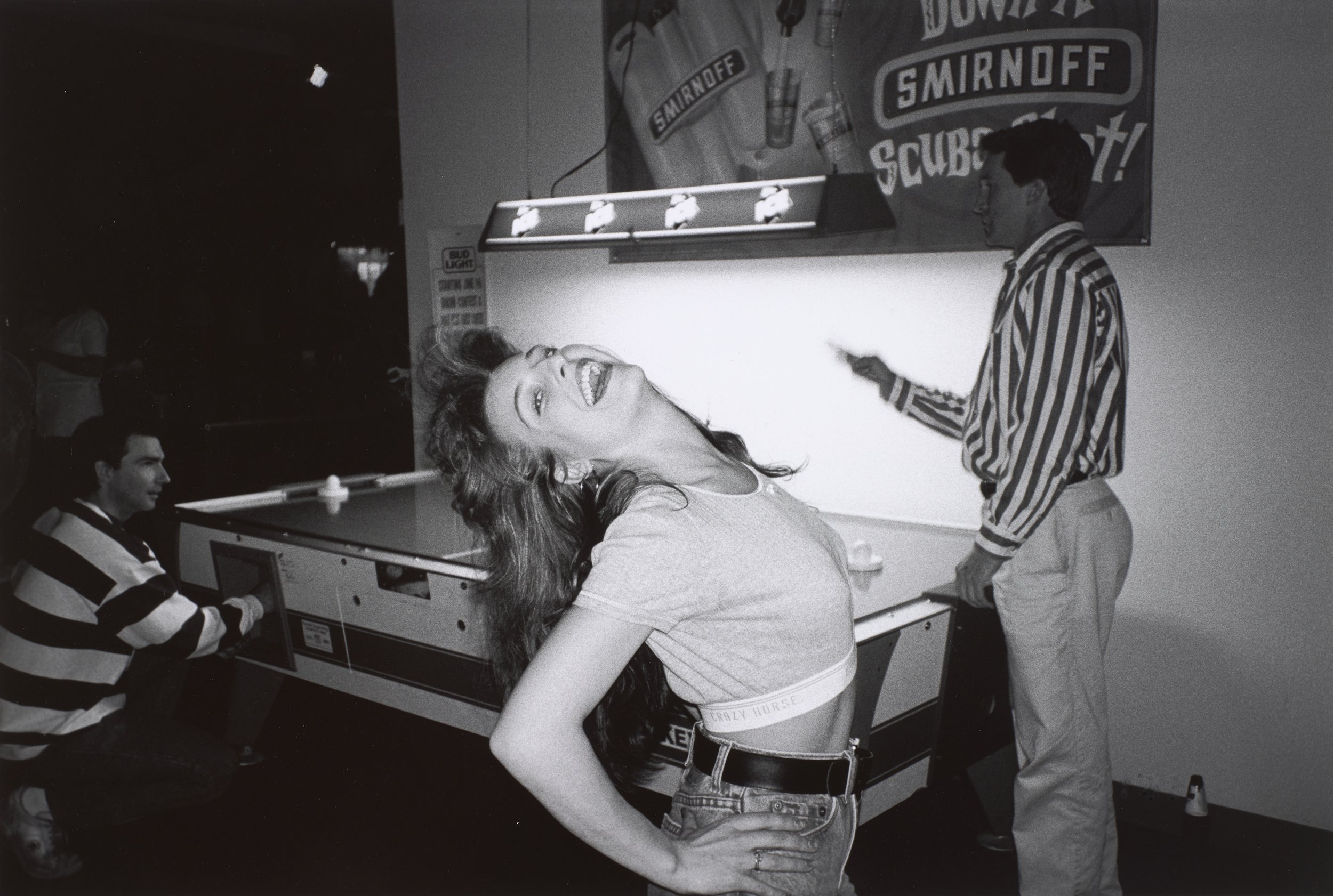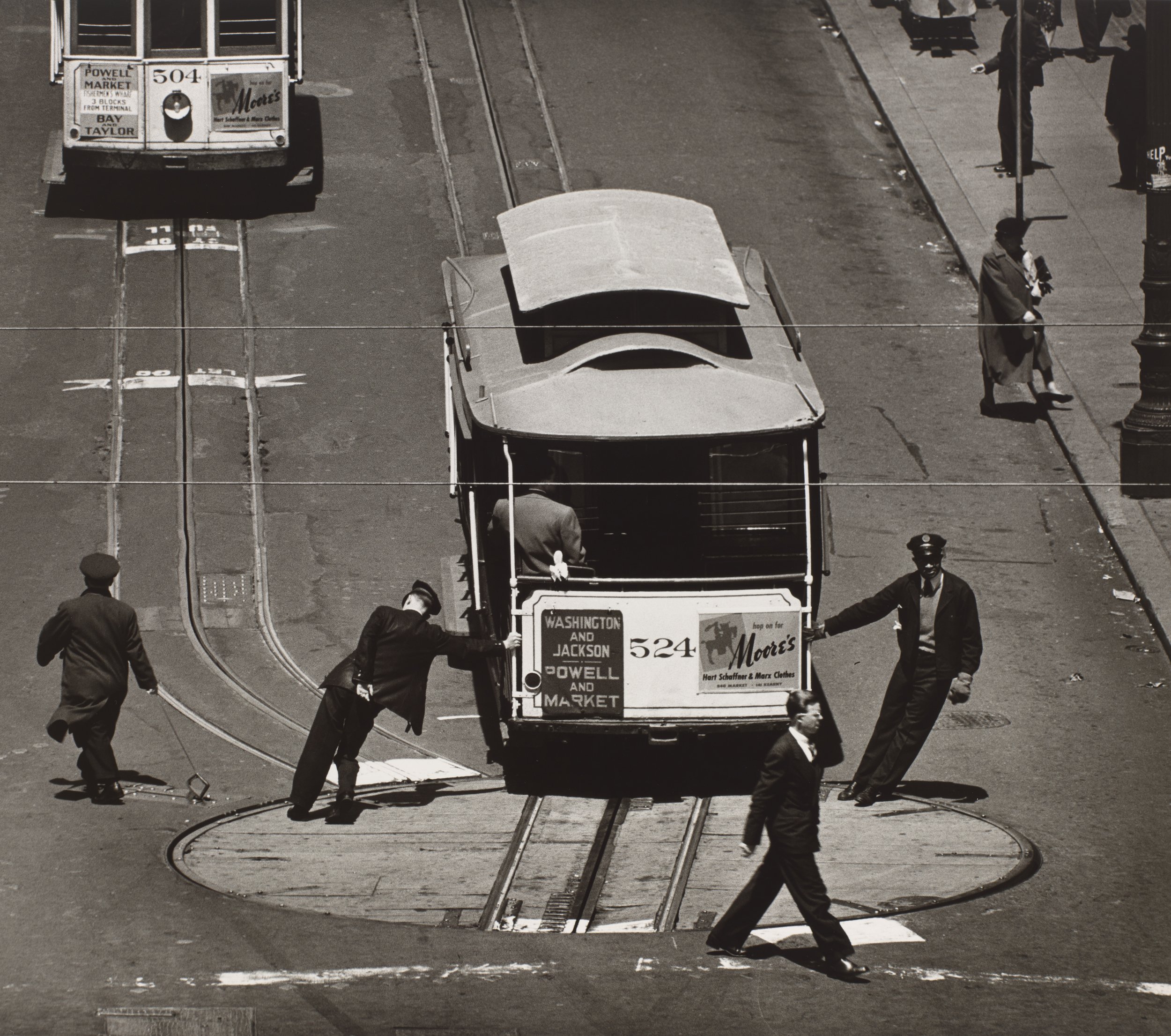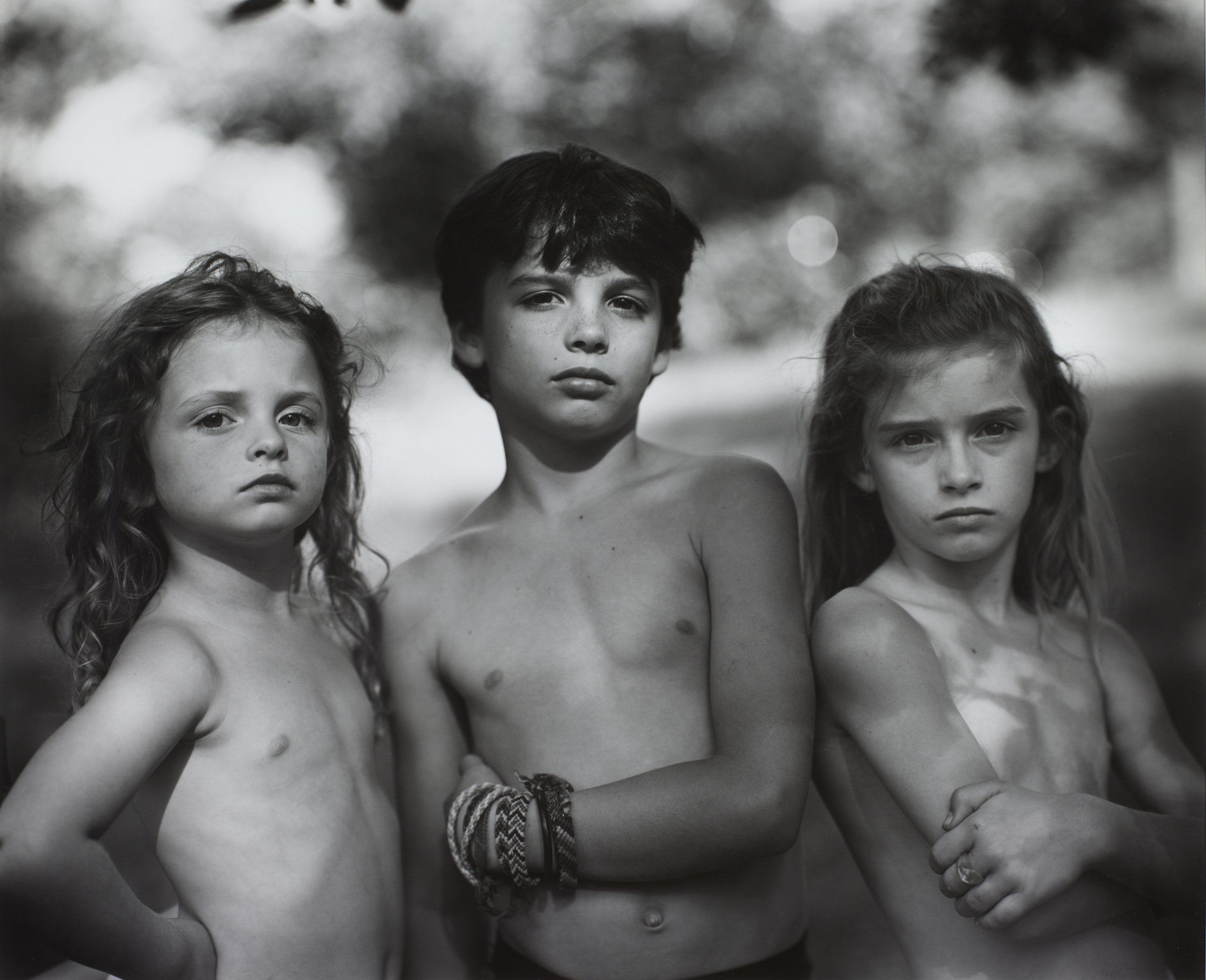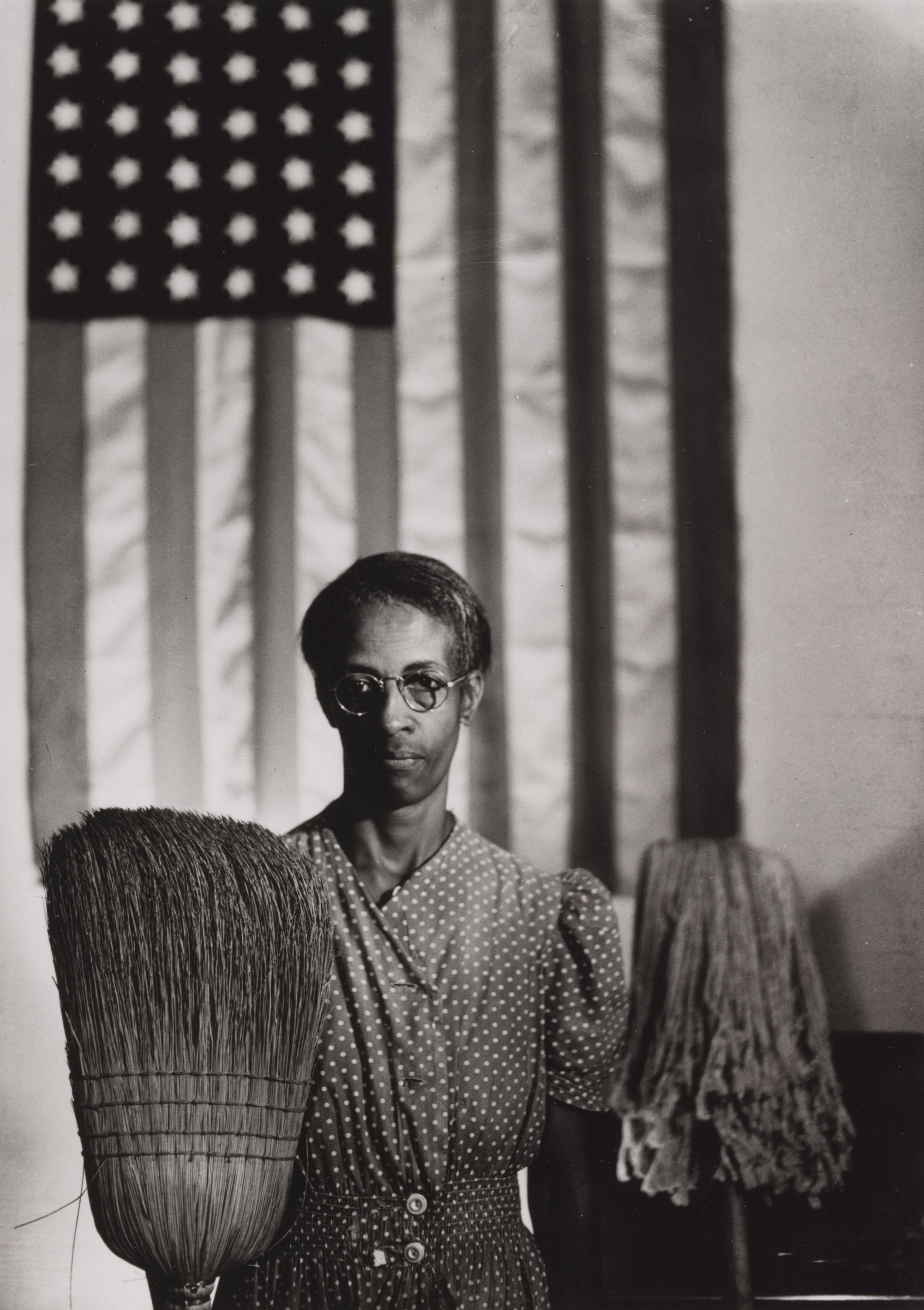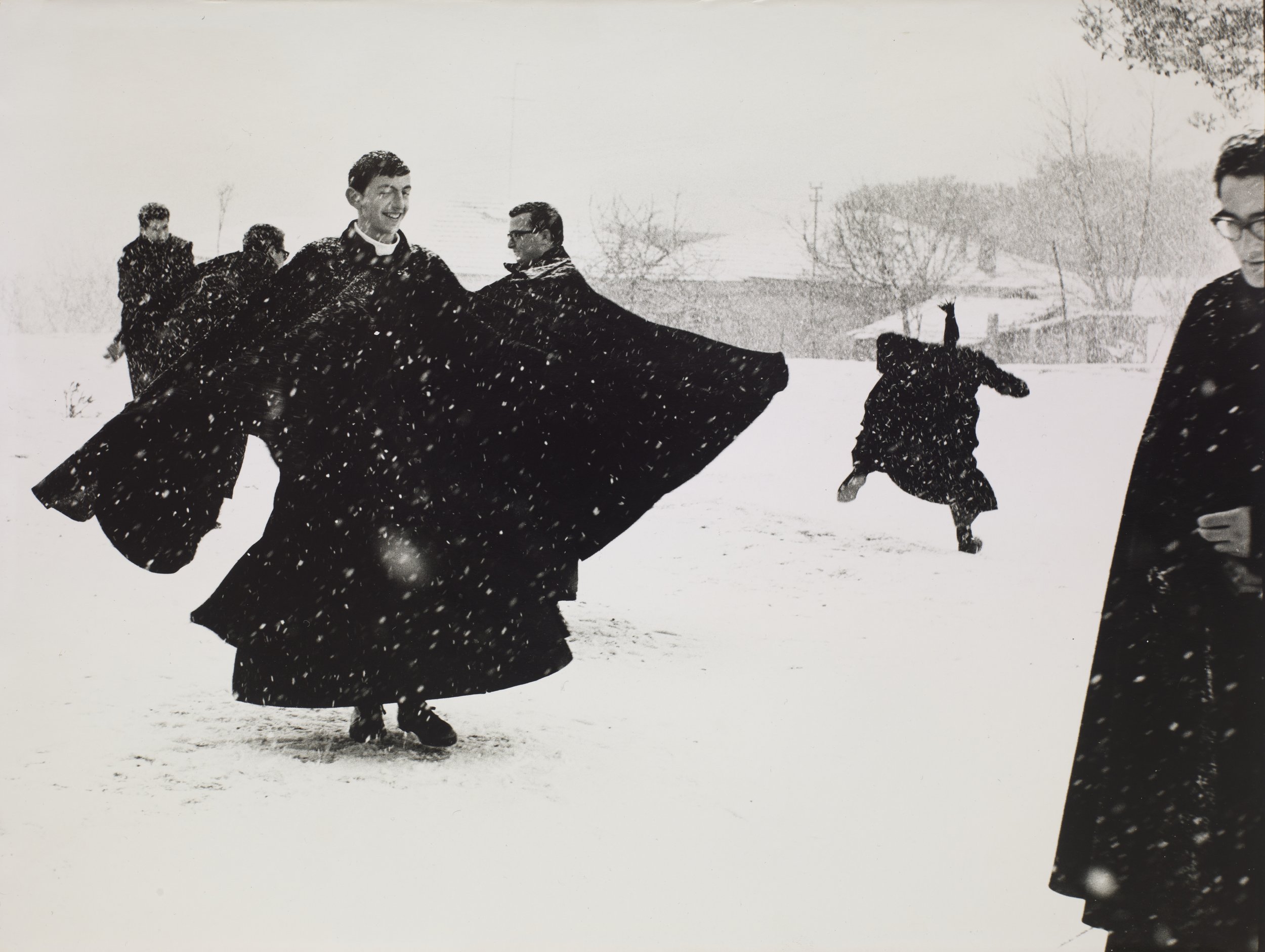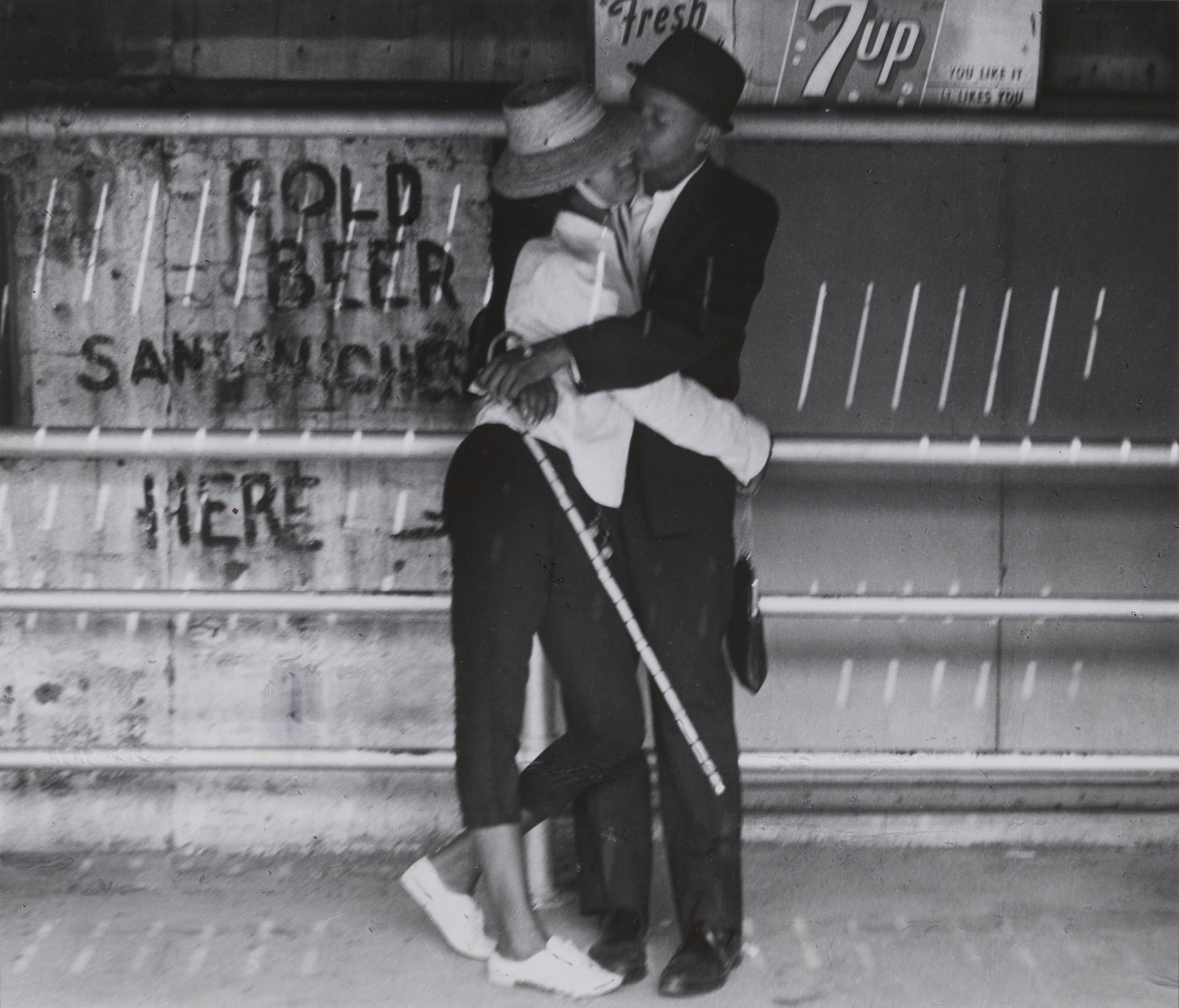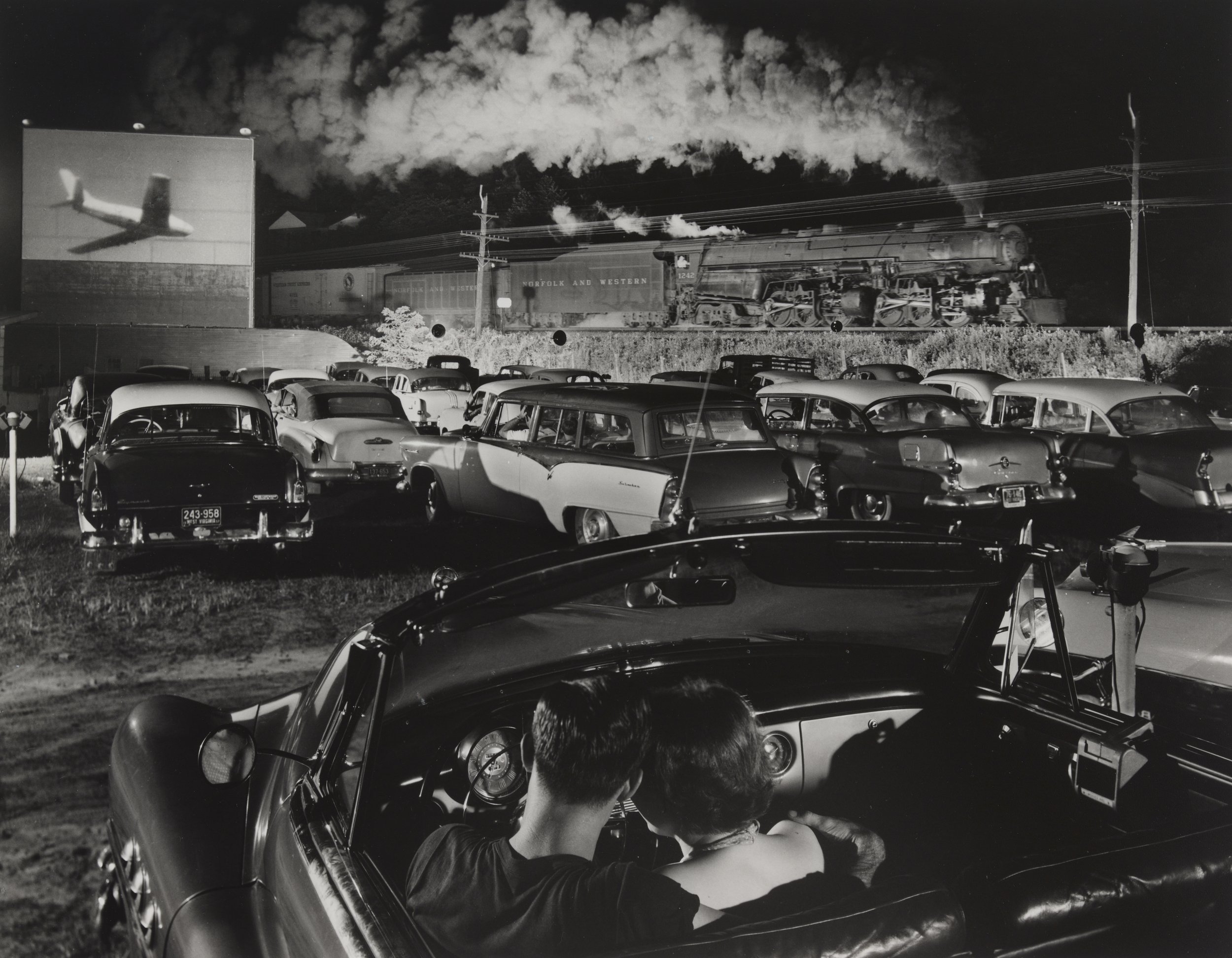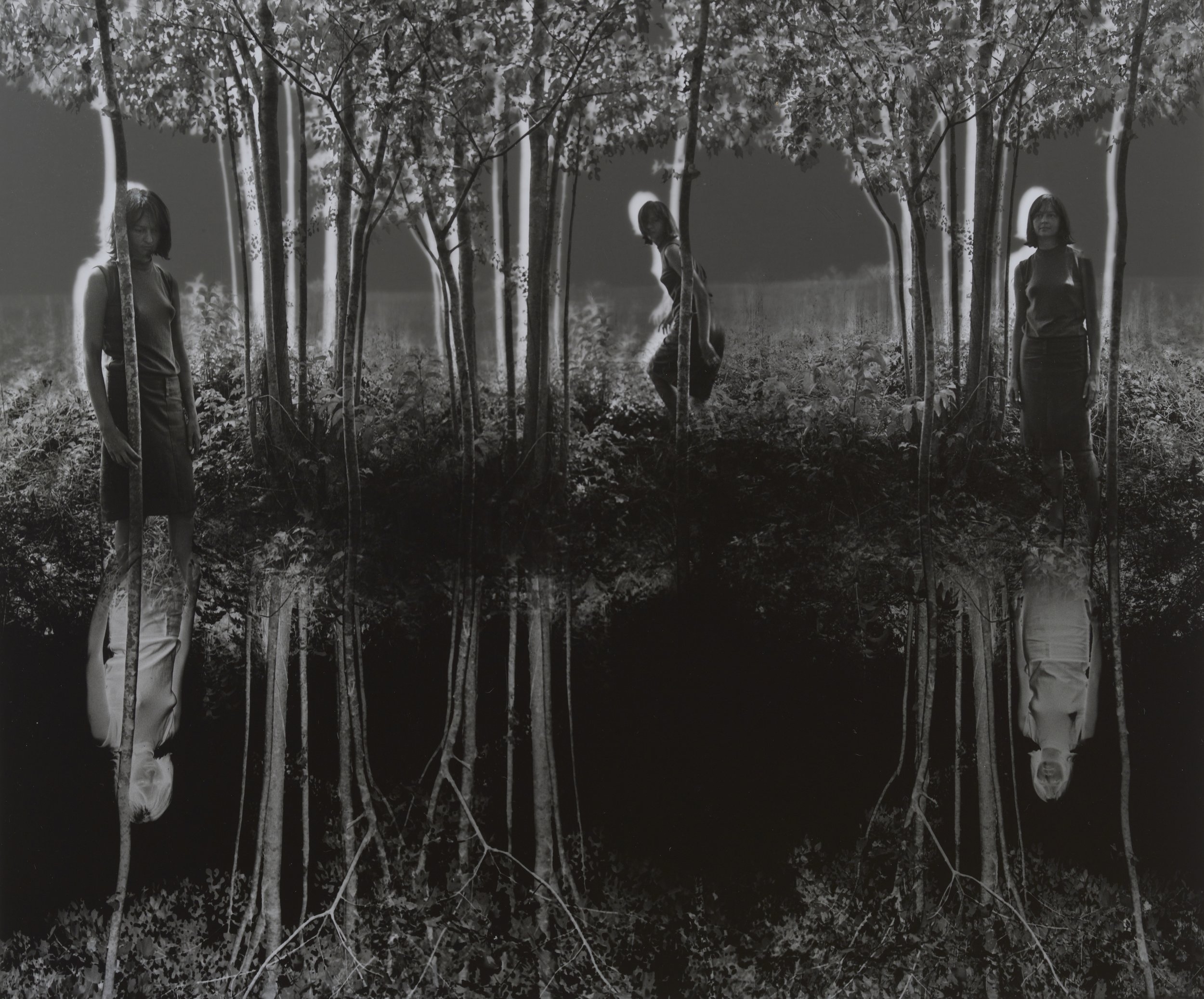Blind Magazine: Presence: a selection of portraits taken by great photographers
Nearly one hundred and sixty images, selected from Judy Glickman Lauder's collection of over six hundred and fifty prints, explore the idea of “presence” in the human spirit. Some eighty photographers are represented.
January 5, 2023
Melonie Bennett (United States, born 1969), Suzie, Bahama Beach Club, Portland, Maine, 1996, gelatin silver print, 16 x 20 inches. Portland Museum of Art, Maine, Promised Gift from the Judy Glickman Lauder Collection, 25.2001.1. Image courtesy Luc Demers. © Melonie Bennett
This article originally appears (in French) in blind magazine. Read the translated version below!
It is difficult to give meaning to the word “presence” within the framework of a discourse on photography. According to the dictionary definition, presence is “something felt to be present, or believed to be present ”.
This definition seems to agree with the contents of the book Presence — The Photography Collection of Judy Glickman Lauder , recently published by Aperture Publishing. The book provides insight into a dynamic collection of iconic photographs, brought together by a woman who cuts to the chase with intelligence and insight, calling on the masters to illustrate photography's past.
Max Yavno (United States, 1911–1985), Cable Car, San Francisco, 1947, gelatin silver print, 15 1/2 x 17 1/2 inches. Portland Museum of Art, Maine, Promised Gift from the Judy Glickman Lauder Collection, 7.1998.73. Image courtesy Luc Demers. © Center for Creative Photography, The University of Arizona
An unparalleled collection
Some of the images selected for this book do indeed have an exceptional presence – see, for example, the striking portrait of Winston Churchill by Yousuf Karsh, where the power emanating from the composition and the subject of the image itself makes it stands out immediately. In this unambiguous large format, Churchill looks directly at the lens, intimidating the viewer with his belligerent attitude and expression.
An anecdote should be noted: not obtaining the cooperation of his model, Karsh went himself to remove his legendary cigar from Churchill's mouth. Back behind the lens, a few seconds later, the photographer took measure of the gift Churchill was giving him: a pure, unstudied response, imbued with the frustration of an imposing figure – a response that gives all its emphasis to the image.
Note here Karsh's presence of mind , in his instantaneous decision to sweep away the decorum and invade his subject's territory: this type of decision is, in many respects, the modus operandi of the book.
Sally Mann (United States, born 1951), Emmett, Jessie, and Virginia, 1989, gelatin silver print, 18 3/4 x 23 inches. Portland Museum of Art, Maine, Promised Gift from the Judy Glickman Lauder Collection, 4.2012. © Sally Mann. Courtesy Gagosian
Naming the work Presence opens up a double interpretation: on the one hand, these images are “visual cries from the heart” , inscribing themselves in the world as so many singular examples of the power of a medium; and on the other hand (which perhaps matters even more), they are a tribute to the discerning gaze and generous vision of Judy Glickman Lauder, present through her very choices.
During the two years that she devoted to the book and to the preparation of the exhibition, there were many aspects of her own personality that she discovered.
In a compilation that spans nearly a century (featuring such huge names as Hurrel, Avedon, Cartier-Bresson, Salgado , Parks, and Capa), Judy Glickman Lauder, Chris Boot, the Aperture team and many others have selected, with professionalism and a great sense of nuance, more than one hundred and sixty images out of nearly seven hundred.
Thanks to the generosity of Judy Glickman Lauder and her desire to share this overview of 20th century photography, the book is published on the occasion of an exhibition at the Portland Museum of Art, in the State of Maine, which houses this unparalleled collection.
Irving Bennett Ellis (United States, 1902–1977), Louise Weinstein Ellis, 1938, gelatin silver print, 9 x 7 inches. Portland Museum of Art, Maine, Promised Gift from the Judy Glickman Lauder Collection, 11.2006.7. Image courtesy Luc Demers. © Judy Glickman Lauder Collection
Imogen Cunningham (United States, 1883– 1976), Edward Weston and Margrethe Mather, 1922, gelatin silver print, 9 1/4 x 7 3/8 inches. Portland Museum of Art, Maine, Promised Gift from the Judy Glickman Lauder Collection, 5.2021. Image courtesy Luc Demers. © 2022 Imogen Cunningham Trust
Roman Vishniac (United States, born Russia, 1897–1990), Granddaughter and Grandfather, Lublin, Poland, 1937, gelatin silver print, 10 5/8 x 10 5/16 inches. Portland Museum of Art, Maine, Promised Gift from the Judy Glickman Lauder Collection, 1.2000. © The Magnes Collection of Jewish Art and Life, UC Berkley
Timeless strength
Magnificently produced in Verona on the presses of the EBS printing house, Presence includes many essential photographs in the history of the medium, and which define its grandeur by the timeless force of their classicism.
To name just a few of the images that command particular attention in the book: Charis by Edward Weston (1936), Mainbocher Corset by Horst P. Horst (Paris, 1939), The Hand of Man (1902) and The Steerage (1907) by Alfred Stieglitz, Welsh Miners (1950) and Spanish Wake (1951) by W. Eugene Smith , Madrid by Henri Cartier-Bresson (1939), or even Migrant Mother, Nipomo, California by Dorothea Lange ( 1936).
Today, with the alarming resurgence of racist discourse from a variety of backgrounds, images such as Gordon Parks ' American Gothic (Portrait of Ella Watson), (Washington DC, 1942) speak volumes about the potential of photography in terms of social criticism.
Parks and Ms. Watson enjoyed a unique relationship at the time, collaborating on more than eighty photographs, which show Ms. Watson at home, at work, in her place of worship, surrounded by her family – the most classic image of the series remains that of the model posing in front of the American flag.
Ms. Watson, with an energetic and stern expression, sharing the foreground of the image with a broom and a mop while the flag of the United States forms the backdrop, demands that the viewer take a stand. The present echoes what is represented in the photograph: we cannot remain indifferent to it, it resonates with what weighs on us on a daily basis.
Gordon Parks (United States, 1912–2006), American Gothic (Portrait of Ella Watson), Washington, DC, 1942, gelatin silver print, 13 x 9 1/8 inches. Portland Museum of Art, Maine, Promised Gift from the Judy Glickman Lauder Collection, 3.2016.8. Image courtesy Luc Demers. Courtesy of and © The Gordon Parks Foundation
Other striking images in the book include Mario Giacomelli's near-dreamlike photograph, depicting the joy of priests frolicking in the snow, Coney Island , ca. 1952 by Leon Levinstein, revealing the passion between two young people, or even the photograph of Audrey Hepburn , Art Buchwald and a few others at Maxim's taken in 1959 by Richard Avedon, halfway between fashion photography and star portraiture .
Two images, however, express their presence with a very particular force: Reflections, Rockefeller Center, New York, c.1945 by Liset Model, where the shadows cast on the windows of the buildings translate, allegorically, the power of photography to reveal the presence of spirits, as well as the image entitled Lella , taken by Edouard Boubat on a Breton beach in 1947: here, a young woman affirms her presence with a kind of defiance, in an almost pictorial composition.
Mario Giacomelli (Italy, 1925–2000), Lo Non Ho Mani Mi Accarezzino Il Volto (There Are No Hands to Caress My Face), 1961–1963, gelatin silver print, 11 7/8 x 15 7/8 inches. Portland Museum of Art, Maine, Promised Gift from the Judy Glickman Lauder Collection, 6.2018.17. Image courtesy Luc Demers. Archivio Mario Giacomelli © Simone Giacomelli
Richard Avedon (United States, 1923–2004), Audrey Hepburn and Art Buchwald, with Simone D'Aillencourt, Frederick Eberstadt, Barbara Mullen, and Dr. Reginald Kernan, evening dresses by Balmain, Dior, and Patou, Maxim's, Paris, August 1959, 1959, gelatin silver print, 16 11/16 x 23 5/16 inches. Portland Museum of Art, Maine, Judy Glickman Lauder Collection, Museum purchase with gift in honor of Judith Glickman Lauder, 2020.7. © The Richard Avedon Foundation
Leon Levinstein (United States, 1910–1988), Coney Island, 1966, gelatin silver print, 10 1/4 x 12 inches. Portland Museum of Art, Maine, Promised Gift from the Judy Glickman Lauder Collection, 4.2008.1. Image courtesy Luc Demers. © Leon Levinstein, Courtesy of Howard Greenberg Gallery, New York
“Each photograph is a certificate of attendance”
The book opens with a text by Anjuli Lebowitz in which she quotes Roland Barthes: “ Each photograph is a certificate of attendance ”. A visceral, organic illustration of this claim is provided in the book by photographs such as Lena on the Bally Box , Essex Junction, Vermont (1973) by Susan Meiselas , where six figures bustle about outside a strip club, showcasing the stripper's decidedly provocative attitude and gaze, claiming her presence with almost audible force.
Or, Mick and Bianca Jagger after their wedding, Saint-Tropez, France (1971 ) by Patrick Lichfield, an image that grabs attention because of what it suggests – sex, drugs, rock'n'roll . Thanks to the talent of the photographer, the spectator seems to have a front row seat to witness the glamorous spectacle of a rock star on his wedding day.
Norman Seeff (United States, born South Africa, born 1939), Robert Mapplethorpe and Patti Smith, New York, 1969, archival pigment print, 15 x 22 inches. Portland Museum of Art, Maine, Promised Gift from the Judy Glickman Lauder Collection, 1.2016.1. Image courtesy Luc Demers. © Photograph by Norman Seeff
Melonie Bennett (United States, born 1969), Suzie, Bahama Beach Club, Portland, Maine, 1996, gelatin silver print, 16 x 20 inches. Portland Museum of Art, Maine, Promised Gift from the Judy Glickman Lauder Collection, 25.2001.1. Image courtesy Luc Demers. © Melonie Bennett
A photographer herself, Judy Glickman Lauder is in her element among the greats of photography; as a collector, she is close to humanity, which is expressed in all the works she has chosen to present. But if a collection is fluid, malleable, whether it weaves, expands or limits itself according to the market and budgetary constraints, a book is closed as soon as it is printed – intended, by nature, to remain as it is in history.
And if many images in this work are familiar to us as well as their subjects, the fact remains that they convey, under cover of a false simplicity, the spirit of an entire generation.
Ogle Winston Link (United States, 1914– 2001), Hot Shot Eastbound, Iaeger, West Virginia, 1957, gelatin silver print, 14 1/8 x 18 1/8 inches. Portland Museum of Art, Maine, Promised Gift from the Judy Glickman Lauder Collection, 16.2018.8. Image courtesy Luc Demers. © O. Winston Link Museum and Winston Conway Link
Jerry N. Uelsmann (United States, 1934– 2022), Small Woods Where I Met Myself, 1967, gelatin silver print, 10 1/2 x 12 3/4 inches. Portland Museum of Art, Maine, Promised Gift from the Judy Glickman Lauder Collection, 11.2006.18. Image courtesy Luc Demers. © Jerry N. Uelsmann
Anne Brigman (United States, 1869–1950), The Heart of the Storm, 1912, gelatin silver print, 9 3/4 x 7 3/4 inches. Portland Museum of Art, Maine, Promised Gift from the Judy Glickman Lauder Collection, 5.2016.1. Image courtesy Luc Demers.

